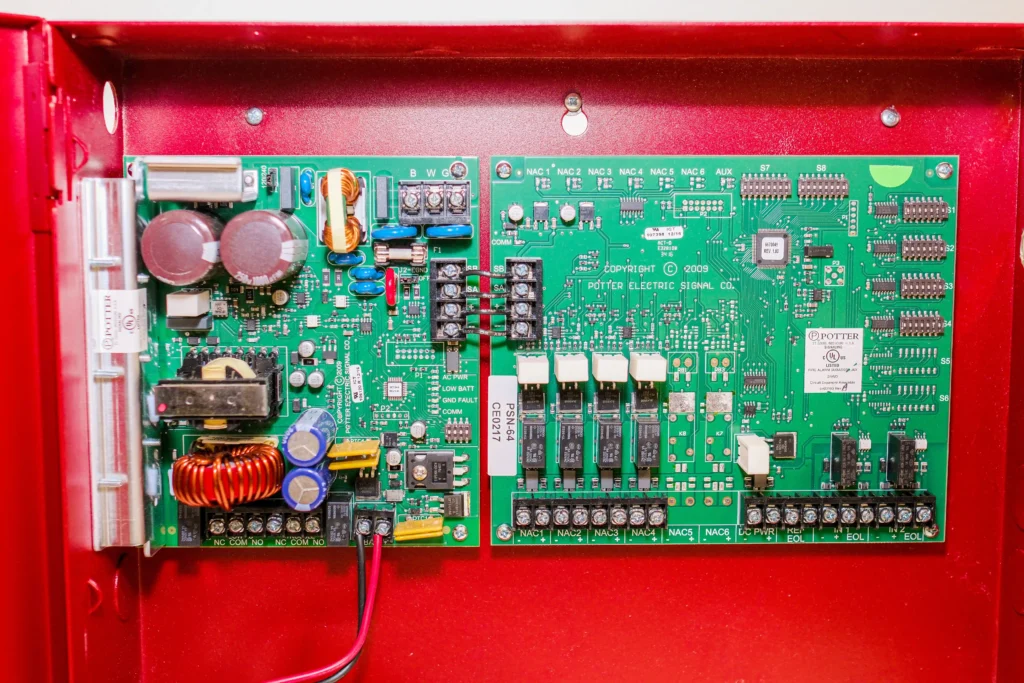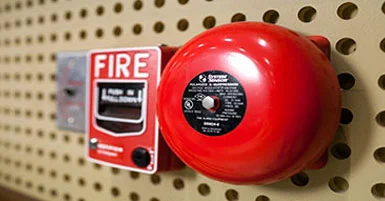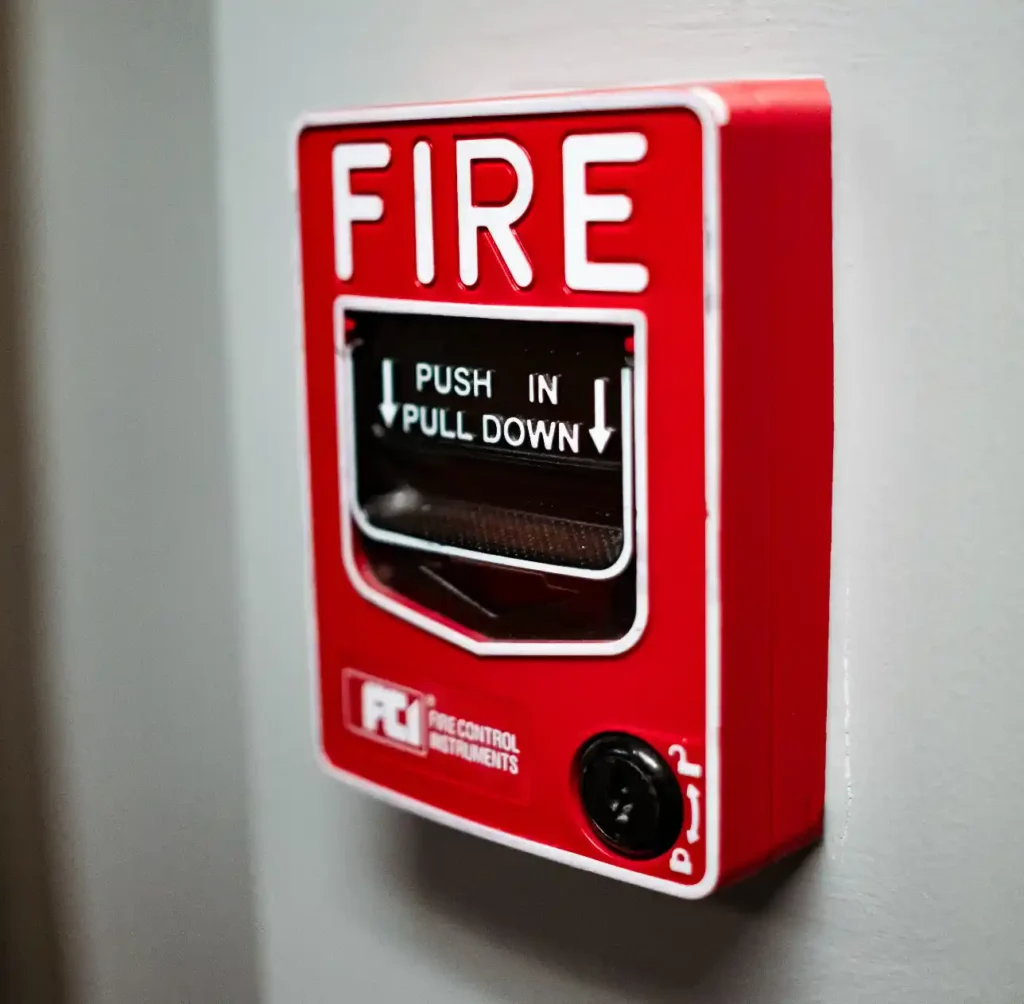

Comprehensive Guide to a fire alarm system & Components
Whether you own or manage a commercial building, you are, in all likelihood, very familiar with the various fire codes your building should adhere to. One of the requirements is that your commercial building has an active and working fire alarm system. Fire alarm systems are designed to alert us to a fire emergency, so that we can take action to protect ourselves, building staff, and members of the general public.
A fire alarm is not to be confused with an individual fire protection device, such as a smoke detector or fire sprinkler. These devices are components of a fire alarm system, but a fire alarm is far more complex and comprehensive than an individual unit.
In this article, we’ll take a closer look at how a comprehensive system like this actually works, and how all the individual components work together to protect you, and your building.
What is a Fire Alarm System’s Main Function?
Very simply put, a fire alarm alerts the occupants of a building that there may be a fire.
Whatever the method of detection is, if a fire alarm is triggered, sounders will operate to warn people in the building that there may be a fire and to evacuate. The fire alarm may also incorporate a remote signal system which could then alert the fire department via a central station.
A fire alarm has 4 essential functions:


1 Detect smoke or fire
2 Alert the occupants
3 Monitor the situation
4 Control the smoke or fire
The brain of the system is the fire alarm control panel. It is the central hub for all of the detector signals to be wired to and provides a status indication to the users.


The Basic Components of a Fire Alarm System
As mentioned earlier, a fire alarm system is an intricate system with many components working together to ensure your safety in the event of a fire.
So, what exactly are the 5 key components of a fire alarm system?
Fire Alarm Initiating Devices
Fire alarm-initiating devices activate the system when a fire occurs, and there are two types of fire alarm-initiating devices:
- Manual Initiating Devices, such as pull stations and break glass stations, that require manual activation by someone in the building when they detect a fire.
- Automatic Initiating Devices that trigger the fire alarm system automatically when a fire occurs. When heat, flames, or smoke is detected they send a signal to the control panel to activate the system.
Fire Notification (or Indicating) Devices
Fire notification devices – these smart setups include notification devices such as bells, horns, chimes, or strobe lights. They play a crucial role in alerting building occupants when a fire is detected.
Fire Alarm Control Panel
The heart of the fire alarm system, the control panel takes charge by monitoring and managing all detection devices. It’s the go-to place where you can check the system’s status at a glance
Primary Power Supply And The Backup Power Supply
Meet the primary power supply, courtesy of your friendly neighborhood power company—usually a 120 or 240-volt A/C source. But wait, there’s more!
When the lights go out, a backup power supply kicks in, armed with 6 or 12-volt batteries. These batteries are the unsung heroes, ensuring the system stays up and running during power hiccups.
Additional important components are:
- Exit lighting
These lights help guide occupants to exit the building safely
- Fire sprinklers
When a fire is detected, the sprinkler system is activated to suppress or extinguish the fire.
- Alarm monitoring
A monitored fire alarm system alerts the authorities when the system is activated.
- Remote controls and display panels
These can be helpful in large buildings with a lot of floors
As you can see, a fire alarm is extremely complex and comprehensive. With so many components needing to work flawlessly together, it is essential to have your system installed by certified and trained experts like our personal here at Kord Fire are.


What are the 3 States of Operation of a Fire Alarm System?
Your Fire Alarm Panel monitors what state your fire alarm system is in at all times. It will then display what state the system is in. This will always be one of the following three states:
Normal
A normal state indicates that all components are functioning as they should, and no alarms are activated. There is nothing to worry about when your system displays this state.
Alarm
When an initiating device is activated, your system will go into an “alarm” state. The notification devices will sound, alerting all occupants that there is a danger and to leave the building. Your control panel will also indicate where in the building the alarm is originating from.
Trouble
A system will display the “trouble” state when there is a short or open wiring taking place within the system. It will then send a sound or signal to notify maintenance personnel. This sound is loud enough to be heard, but not nearly as loud as the actual fire alarm.
Fire Alarm System FAQS
How Does a Fire Alarm Detect a Fire?
Fire alarms monitor around the clock and detect fires through initiation devices (such as smoke and heat detectors). These devices are connected to the system through 2 or 4 wire circuits. When the system detects signs of a fire, it will alert the occupants with a signal (such as bells or chimes).
Some systems are set up to activate other fire safety systems, such as fire sprinklers. Or it may be set up to send a signal to the fire alarm company.
False Alarms
An ill-conceived system can lead to false alarms. The frequent occurrence of false alarms may lead people to underestimate the seriousness of fire alarms, potentially resulting in catastrophic consequences.
That’s why it’s crucial to have your alarm system installed by certified technicians, and have it serviced and tested regularly.
Need help?
Having a properly installed fire alarm system is crucial for occupant safety.
For the past 25 years, Kord Fire has designed, serviced, and tested fire alarm systems. Our expert technicians are fully familiar with local fire codes and state rules and regulations. We can also help integrate your fire alarm system with other technology. (such as HVAC). Furthermore, our team can help train the building manager or maintenance crew how to read and understand the system, and how to disarm a fire alarm.
Whether your current fire alarm system needs updating or service, or you’re only just starting to build, we’re here to help.
Talk to one of our experts today!




